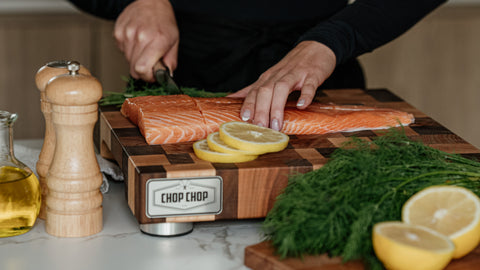Cutting boards are essential tools in the kitchen. Just find the right board for your needs.Concerns are often about bacteria left on the boards. Wether cutting red meat, chicken, or fish, these foods can leave behind bacteria when cut raw. The key is to cut these foods on safe surfaces and clean up afterwards.
Sanitary speaking, is wood or plastic better?
Studies carried out in Europe have shown that wood is the best material of all for use in the food industry. The porosity of the wood ensures that bacteria are absorbed and do not multiply. With excess use, the plastic creates small particles on the top of the surface, so bacteria stay there and can even spread. https://www.aucreuxdunarbre.fr/hygiene-et-bois/ As Rémy Leroux of Protégez-vous confirms: "Wood species such as cherry, walnut and maple are hardwoods with very firm grain, which are to be preferred
when choosing a good cutting board. Wood is the safest surface since bacteria live longer on plastic and other surfaces." For the full article Protégez-vous

The pros and cons of choosing a wooden cutting board
The pros
-
Wood is a material that regenerates, that is to say that your board can last you a lifetime if well maintained. Safe in contact with food and sanitary Wooden planks are versatile in their use. They can be used as a cutting board, presentation, serving, decoration and even a plate! By their aesthetics, they can serve as a decorative accessory in the kitchen, being quality wooden boards.
The cons
- Request for maintenance. (Clean and oil well) See our care and maintenance guide

The pros and cons of choosing a plastic cutting board
The pros
- The plastic boards are easy to clean. They can be soaked in water and they can be put in the dishwasher.
- Inexpensive.
The cons
-
Plastic boards must be replaced often, since depending on the frequency of use they can wear out quickly.
-
Surface is not ideal for your knives.
-
Unsanitary.










